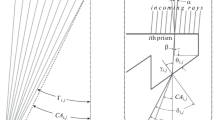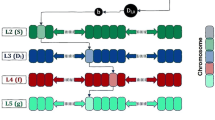Abstract
Fresnel lenses allow the concentration of sunlight that can be employed in different thermal unitary operations or endothermic chemical transformations. A system with Fresnel lenses should also take into account vessel or reactor surface thermal losses (reflection, convection and emission), as well as the thermal energy required to keep the vessel or reactor structure warm. In this paper, a numerical and experimental analysis indicated that the solar radiation incident on the lens, the Fresnel lens area and the specimen mass can be represented by a grouping called Heating Factor (31 ≤ Ψ (W/kg) ≤ 3347). The Heating Factor (Ψ) was strongly correlated with the maximum temperature conductive specimens could reach when inserted at the focal point of a Fresnel Lens. Equilibrium Temperatures were predicted by a physical-mathematical model and validated by experimental tests. The Fresnel lens system has been shown to be able of providing Equilibrium Temperatures from 345 to 1600 K for specimens with Heating Times between 3 and 85 min and Initial Thermal Rates from 1.16 to 312.00 K/min. Numerical-experimental analyses also showed that the heating dynamic was strongly influenced by the nature of the materials that constituted the specimens (specific mass and the specific heat).





















Similar content being viewed by others
Abbreviations
- a :
-
parameter adjusted for Equilibrium Temperature Eq. (K kgm/Wm).
- a c :
-
gravitational acceleration (m/s2).
- a i :
-
linear effects (i = 1..3) of variables on Equilibrium Temperature (K).
- A ij :
-
nonlinear effects (i,j = 1..3) of variables on Equilibrium Temperature (K).
- a S :
-
surface area of specimen (m2).
- A L :
-
Fresnel lens useful area (m2).
- b :
-
parameter adjusted for Heating Time Equation (min).
- b i :
-
linear effects (i = 1..3) of variables on Heating Time (min).
- B ij :
-
nonlinear effects (i, j = 1..3) of variables on Heating Time (min).
- c i :
-
linear effects (i = 1..3) of variables on the Initial Thermal Rate (K/min).
- C ij :
-
nonlinear effects (i, j = 1..3) of variables on the Initial Thermal Rate (K/min).
- c PF :
-
specific heat of the fluid (J/kg K).
- c PS :
-
specific heat of the specimen (J/kg K).
- D :
-
sphere diameter (m).
- f :
-
parameter adjusted for Initial Thermal Rate Eq. (K kgg/min Wg).
- F S → ∞ :
-
form factor between specimen and environment (−).
- g :
-
parameter adjusted for Initial Thermal Rate Equation (−).
- G :
-
incident solar radiation on the top of the Fresnel lens (W/m2).
- h :
-
convective heat transfer coefficients (W/m2K).
- H :
-
height of the aluminum frame experimental unit (m).
- k F :
-
fluid thermal conductivity (W/m K).
- k S :
-
specimen thermal conductivity (W/m K).
- ℓ :
-
Fresnel lens focal length (m).
- L :
-
Fresnel lens length (m).
- m :
-
set parameter for Equilibrium Temperature Equation (−).
- n :
-
set parameter for Heating Time Equation (kg/W).
- M :
-
specimen mass (kg).
- N :
-
counter for possible combinations of Ψ (−).
- Nu :
-
Nusselt number (−).
- p :
-
significance index of adjusted parameters (−).
- Pr :
-
Prandtl number (−).
- q 0 :
-
initial thermal rate of specimens (K/min).
- q c :
-
thermal convection heat loss rate of the specimen (J/s).
- q e :
-
thermal radiation heat loss rate of the specimen (J/s).
- q i :
-
heat rate incident on the specimen (J/s).
- q r :
-
heat rate reflected by specimen (J/s).
- Ra :
-
Rayleigh number (−).
- t :
-
time (min).
- T :
-
instantaneous specimen temperature (K).
- T E :
-
steady-state specimen Equilibrium Temperature (K).
- T F :
-
melting temperature of specimen material (K).
- t H :
-
specimen Heating Time to reach steady state (min).
- T ∞ :
-
ambient temperature (K).
- VS :
-
specimen volume (m3).
- W :
-
Fresnel lens width (m).
- X 1 :
-
coded Fresnel lens area (−).
- X 2 :
-
coded specimen mass (−).
- X 3 :
-
incident solar radiation coded on Fresnel lens (−).
- α :
-
surface absorptivity of the specimen (−).
- α F :
-
thermal diffusivity of fluid (m2/s).
- β :
-
coefficient of thermal expansion of fluid (K−1).
- δ:
-
relative deviation between predicted values and experimentally observed values (−).
- ε :
-
surface emissivity of the specimen (−).
- η :
-
Average Equilibrium Temperatures of each specimen (K).
- λ :
-
Average Heating Times of each specimen (min).
- μF :
-
dynamic viscosity of the fluid (kg/m s).
- ρ :
-
surface reflectivity of the specimen (−).
- ρ F :
-
density of the fluid (kg/m3).
- ρ S :
-
density of the specimen (kg/m3).
- σ :
-
Stefan-Boltzmann Constant (W/m2K4).
- τ :
-
transmissivity of specimen (−).
- τ L :
-
transmissivity of Fresnel lens (−).
- ν F :
-
kinematic viscosity of the fluid (m2/s).
- φ:
-
Average Initial Thermal Rates of each specimen (K/min).
- Ψ :
-
Heating Factor (W/kg).
References
Pereira EB, Martins FR, Gonçalves AR, Costa RS, Lima FJL, Rüther R, Abreu SL, Tiepolo GM, Pereira SV, Souza JG (2017) Atlas Brasileiro de Energia Solar. INPE, São José dos Campos
Hinrichs RA, Kleinbach M, Reis LB (2010) Energia e meio ambiente. Cengage Learning, São Paulo
Ministério de Minas e Energia (2017) Energia no Mundo: 2015-2016, http://www.mme.gov.br (accessed 05 April 2020)
Tsoutsos T, Frantzeskaki N, Gekas V (2005) Environmental impacts from the solar energy technologies. Energy Policy. https://doi.org/10.1016/S0301-4215(03)00241-6
Tian Y, Zhao CY (2013) A review of solar collectors and thermal energy storage in solar thermal applications Appl. Energy. https://doi.org/10.1016/j.apenergy.2012.11.051
Plaza DM, Martinez IC, Gasch GM, Sufrategui FT, García JR (2015) A case study of the feasibility of using solar concentrating technologies for manufacturing ceramics. J Clean Prod. https://doi.org/10.1016/j.jclepro.2014.09.090
Zheng H (2017) Solar energy desalination technology, Elsevier
Lovegrove K, Stein W (2012) Concentrating solar power technology principles. Woodhead Publishing, Developments and Applications
Xie WT, Dai YJ, Wang RZ, Sumanthy K (2011) Concentrated solar energy applications using Fresnel lenses: a review. Renew Sust Energ Rev. https://doi.org/10.1016/j.rser.2011.03.031
Hussain MI, Ali A, Lee GH (2015) Performance and economic analyses of linear and spot Fresnel lens solar collectors used for greenhouse heating in South Korea. Energy. https://doi.org/10.1016/j.energy.2015.06.115
Tsoutsou S, Ferreira CI, Krieg J, Ezzahiri M (2014) Building integration of concentrating solar systems for heating applications. Appl Therm Eng. https://doi.org/10.1016/j.applthermaleng.2014.05.079
Palomino-Resendiz SI, Flores-Hernández DA, Lozada-Castillo N, Guzmán-Vargas L, Luviano-Juárez A (2018) Design and implementation of a robotic active solar distiller based on a Fresnel concentrator and a photovoltaic system. Energ Convers Manage. https://doi.org/10.1016/j.enconman.2018.04.069
Gupta AR, Jalan AP, Rathod VK (2018) Solar energy as a process intensification tool for the biodiesel production from hempseed oil. Energ Convers Manage. https://doi.org/10.1016/j.enconman.2018.05.050
Aksoy F, Karabulut H (2013) Performance testing of a Fresnel/Stirling micro solar energy conversion system. Energ Convers Manage. https://doi.org/10.1016/j.enconman.2013.08.001
Herranz G, Romero A, Castro V, Rodríguez GP (2013) Development of high speed steel sintered using concentrated solar energy. J Mater Process Technol. https://doi.org/10.1016/j.jmatprotec.2013.06.002
Blanco MJ (2017) Santigosa LR. Elsevier, Advances in Concentrating Solar Thermal Research and Technology
Martinek J, Weimer AW (2012) Evaluation of finite volume solutions for radiative heat transfer in a closed cavity solar receiver for high temperature solar thermal processes. Int J Heat Mass Transf. https://doi.org/10.1016/j.ijheatmasstransfer.2012.11.065
Sharma S, Saha SK, Kedare SB, Singh S (2020) Experimental and numerical study of thermal performance of helical coil receiver with Fresnel lens. Appl Therm Eng. https://doi.org/10.1016/j.applthermaleng.2019.114608
Kaddoura MF, Zeaiter J (2019) Application of thermal energy storage with point focus Fresnel lens concentrator: numerical and experimental analysis. J Energy Storage. https://doi.org/10.1016/j.est.2019.101008
Jin R, Zheng R, Ma X, Zhao Y (2020) Performance investigation of integrated concentrating solar air heater with curved Fresnel lens as the cover. Energy. https://doi.org/10.1016/j.energy.2019.116808
Abuseada M, Ozalp N, Ophoff C (2019) Numerical and experimental investigation of heat transfer in a solar receiver with a variable aperture. Int J Heat Mass Transf. https://doi.org/10.1016/j.ijheatmasstransfer.2018.08.121
Lougou BG, Shuai Y, Pan R, Chaffa G, Tan H (2018) Heat transfer and fluid flow analysis of porous medium solar thermochemical reactor with quartz glass cover. Int J Heat Mass Transf. https://doi.org/10.1016/j.ijheatmasstransfer.2018.06.153
Ali M, Rady M, Attia MAA, Ewais EMM (2020) Consistent coupled optical and thermal analysis of volumetric solar receivers with honeycomb absorbers. Renew. Energ. https://doi.org/10.1016/j.renene.2019.07.082
Riffat S, Mayere A (2013) Performance evaluation of v-trough solar concentrator for water desalination applications, Appl Therm Eng.https://doi.org/10.1016/j.applthermaleng.2012.05.028
Nakakura M, Matsubara K, Bellan S, Kodama T (2020) Direct simulation of a volumetric solar receiver with different cell sizes at high outlet temperatures (1,000–1,500 °C), Renew. Energ. https://doi.org/10.1016/j.renene.2019.07.039
Liu Q, Wang Y, Lei J, Jin H (2016) Numerical investigation of the thermophysical characteristics of the mid-and-low temperature solar receiver/reactor for hydrogen production. Int J Heat Mass Transf. https://doi.org/10.1016/j.ijheatmasstransfer.2016.02.012
Lin M, Sumathy K, Dai YJ, Zhao XK (2014) Performance investigation on a linear Fresnel lens solar collector using cavity receiver. Sol Energy. https://doi.org/10.1016/j.solener.2014.05.026
Perini S, Tonnellier X, King P, Sansom C (2017) Theoretical and experimental analysis of an innovative dual-axis tracking linear Fresnel lenses concentrated solar thermal collector. Sol Energy. https://doi.org/10.1016/j.solener.2017.06.010
Roldán MI, Cañadas I, Casas JL, Zarza E (2013) Thermal analysis and design of a solar prototype for high-temperature processes. Int J Heat Mass Transf. https://doi.org/10.1016/j.ijheatmasstransfer.2012.09.063
Incropera FP, DeWitt DP (2004) Transferência de Calor e Massa. LTC, São Paulo
Andrade LA, Barrozo MAS, Vieira LGM (2016) A study on dynamic heating in solar dish concentrators. Renew Energ. https://doi.org/10.1016/j.renene.2015.10.055
Acknowledgments
The authors would like to thank FAPEMIG (Universal/APQ/01758-17) and the Laboratory for Separation and Sustainable Energy (LASER/FEQUI/UFU) for the financial resources.
Author information
Authors and Affiliations
Corresponding author
Ethics declarations
Conflict of interest
On behalf of all authors, the corresponding author states that there is no conflict of interest.
Additional information
Publisher’s note
Springer Nature remains neutral with regard to jurisdictional claims in published maps and institutional affiliations.
Rights and permissions
About this article
Cite this article
D’Arc de Fátima Palhares, D., Araújo, B.S.A., de Faria, É.V. et al. Numerical-experimental evaluation of FRESNEL lens heating dynamics. Heat Mass Transfer 56, 3147–3166 (2020). https://doi.org/10.1007/s00231-020-02924-8
Received:
Accepted:
Published:
Issue Date:
DOI: https://doi.org/10.1007/s00231-020-02924-8




